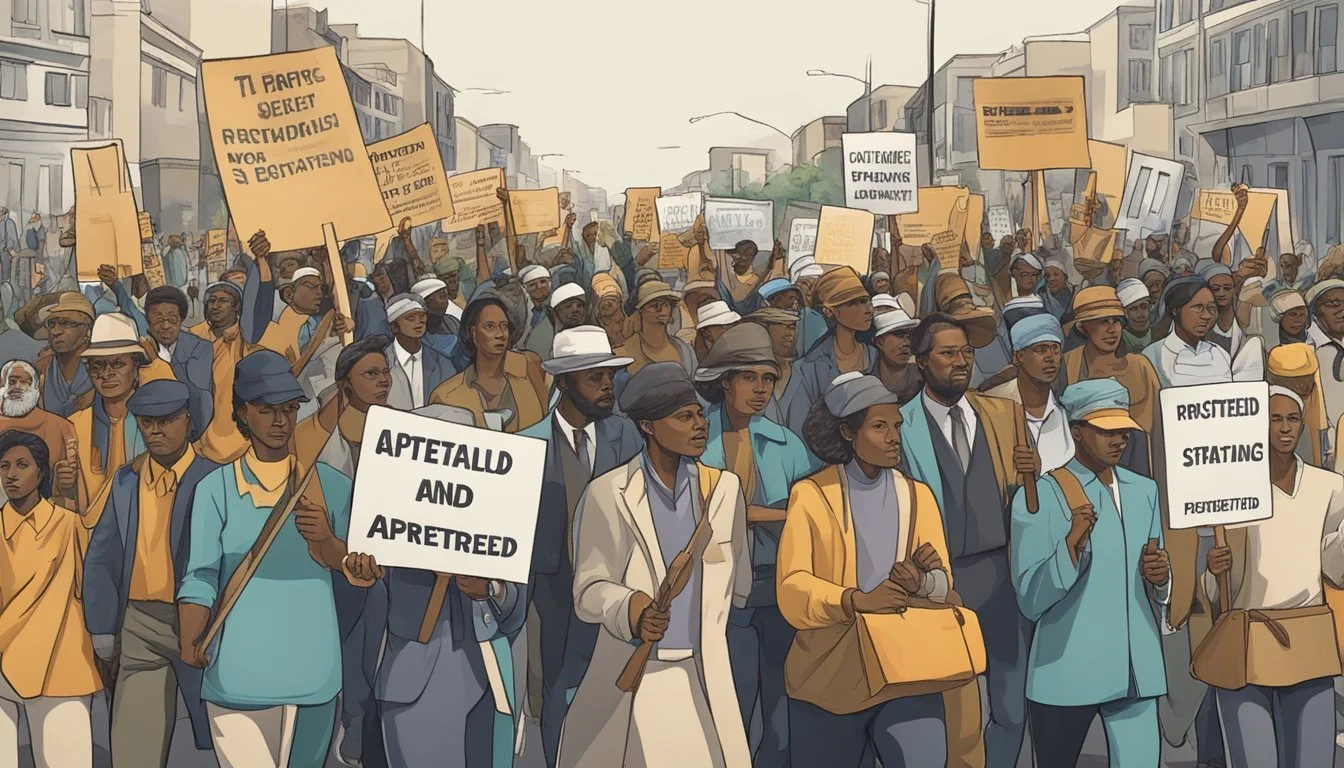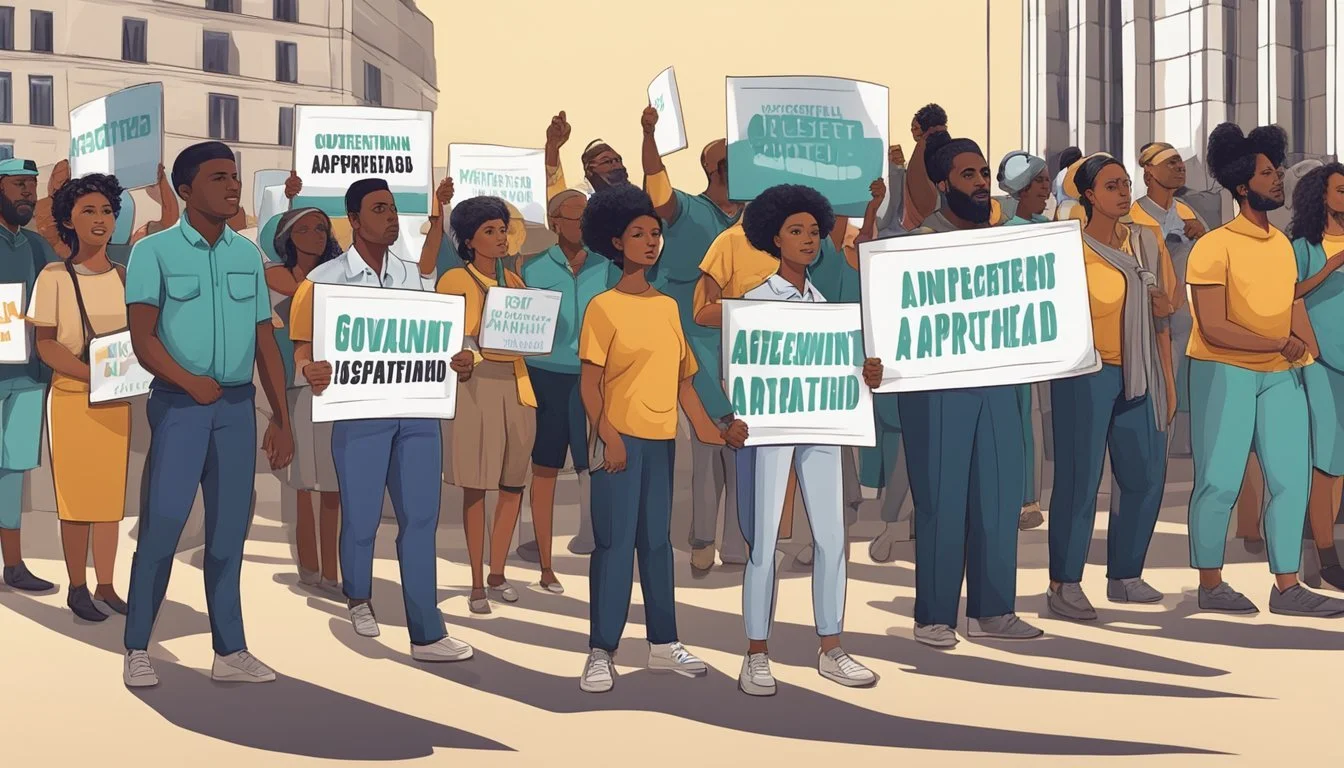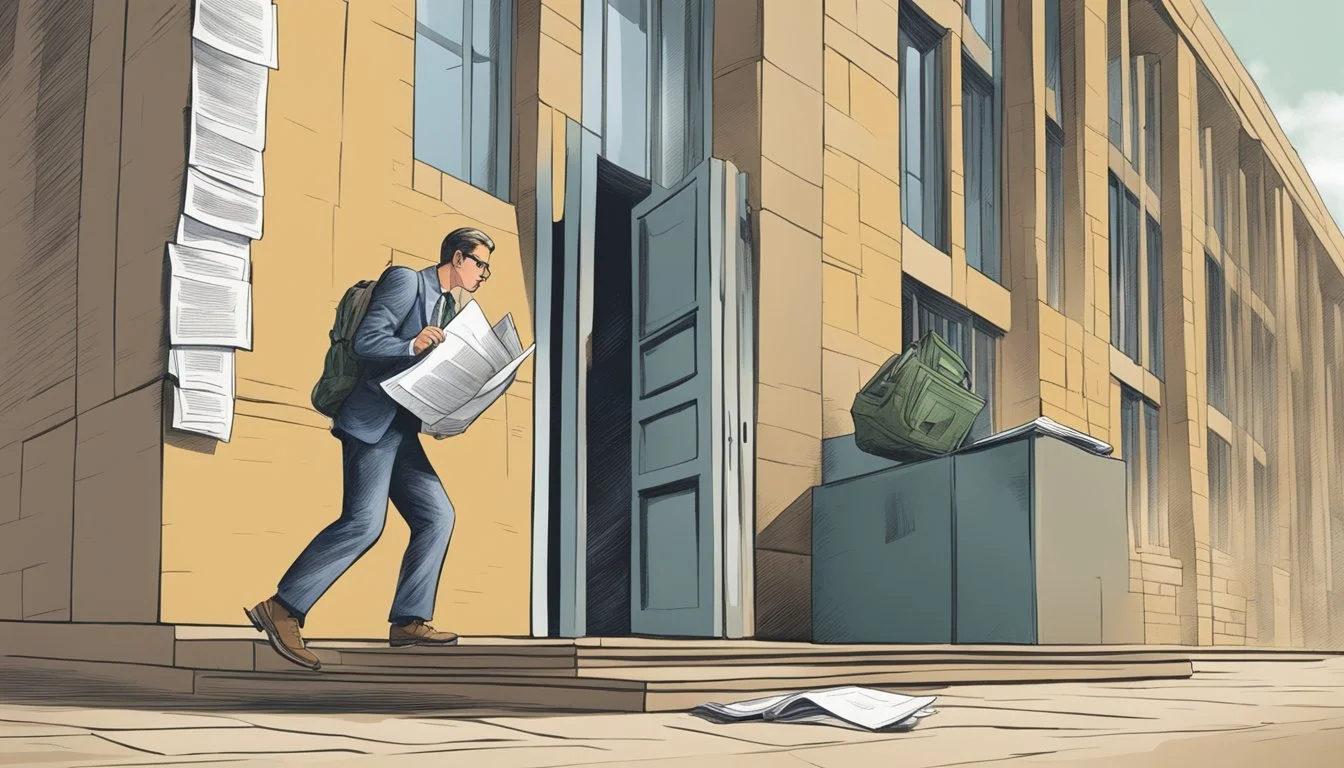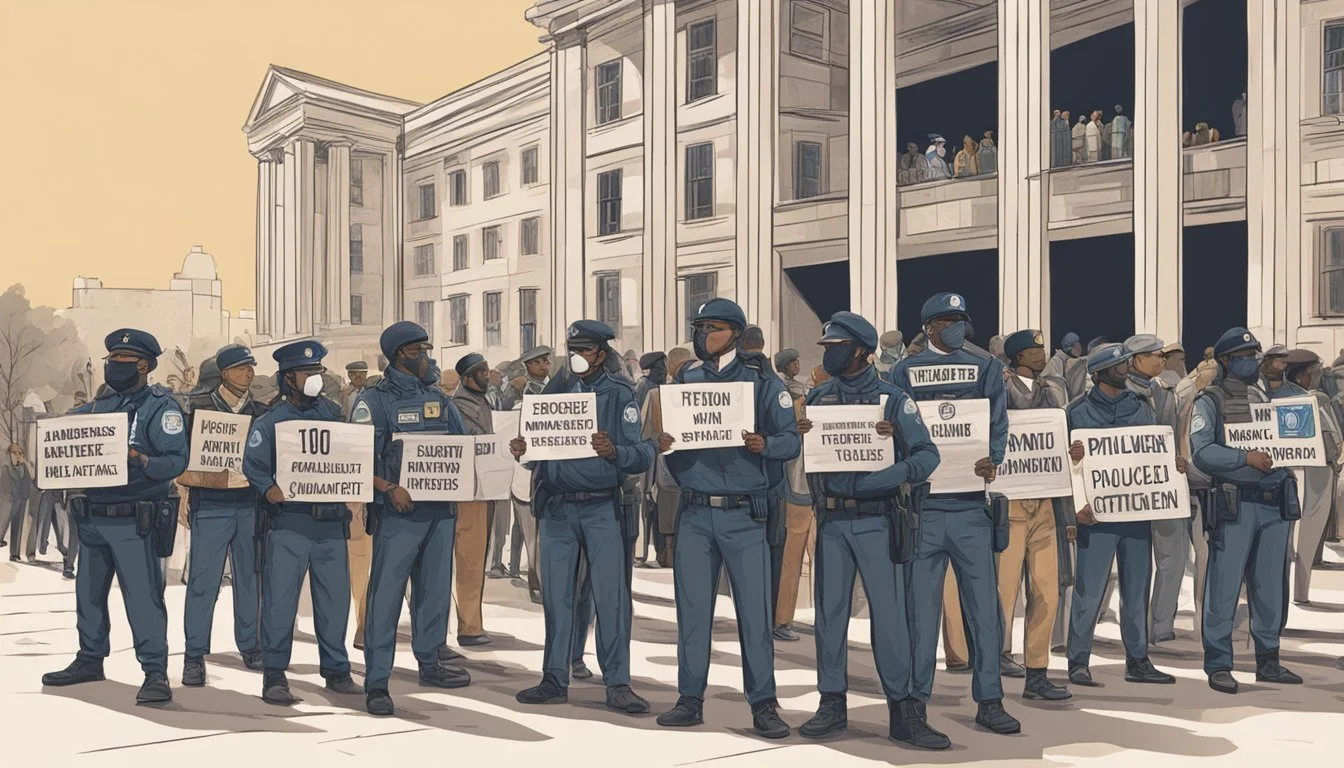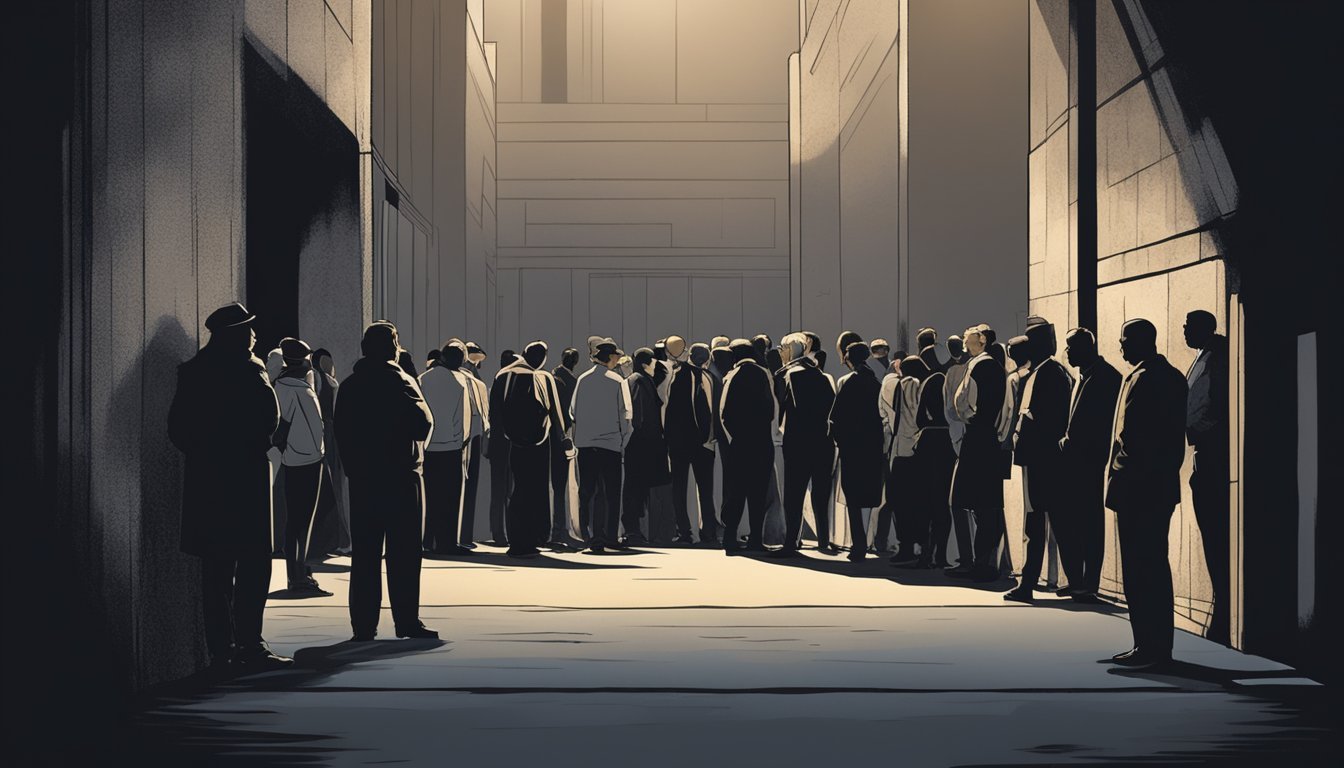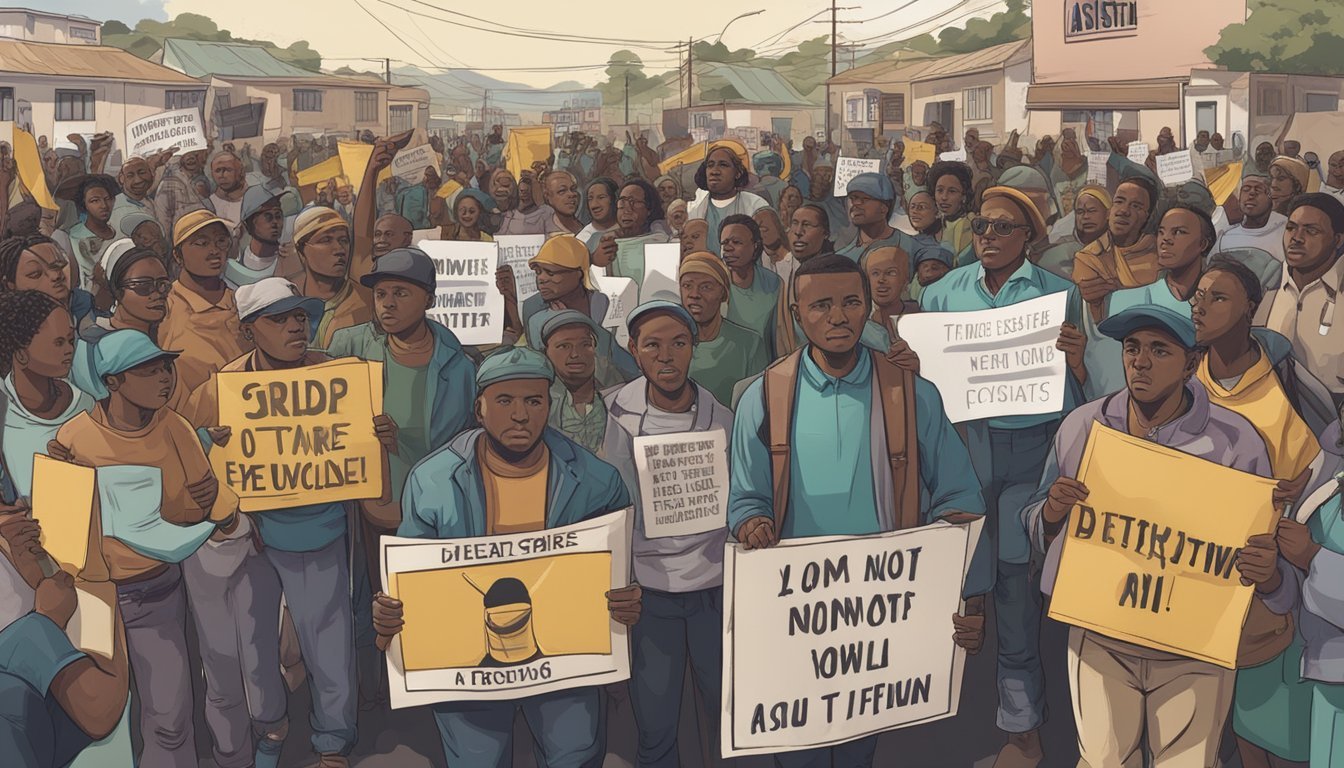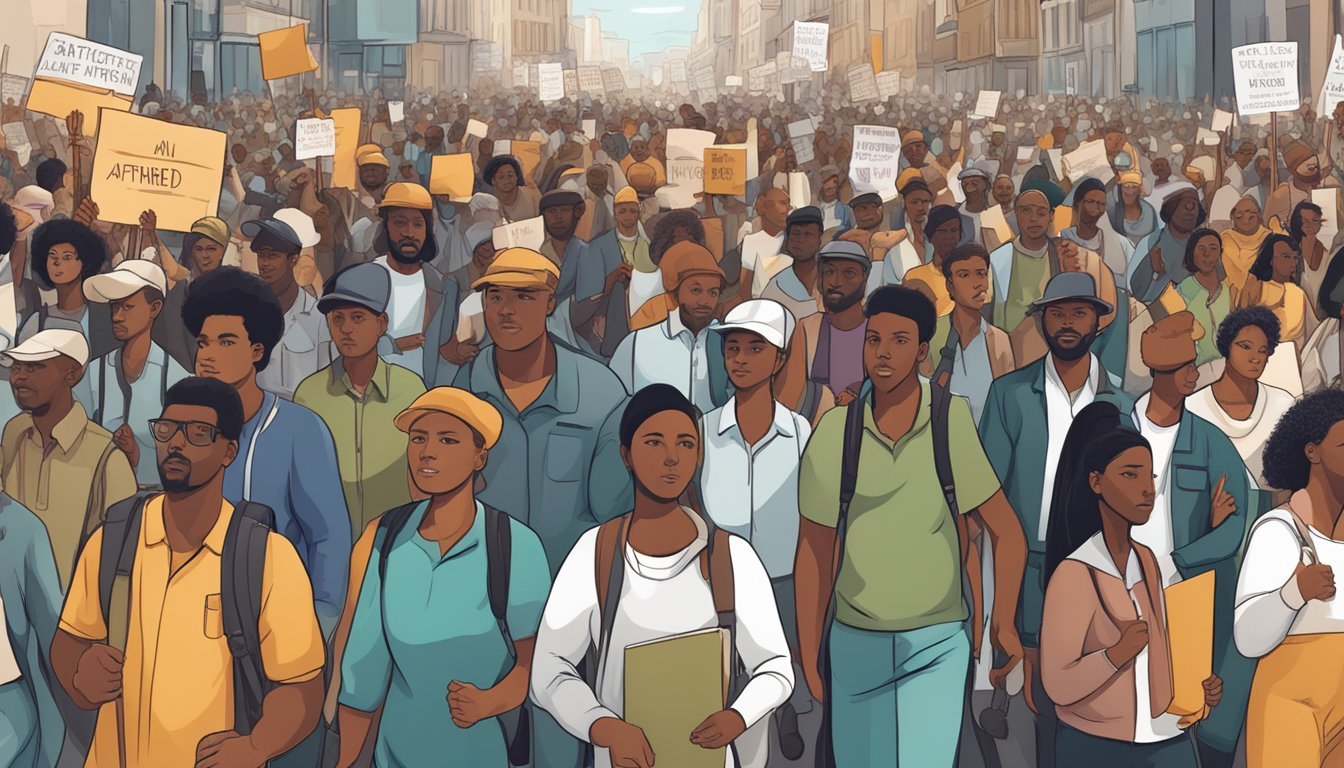Defying Apartheid: The True Story Behind "Cry Freedom"
Biko's Legacy and Attenborough's Film
"Cry Freedom" tells the powerful true story of Steve Biko, a Black anti-apartheid activist, and Donald Woods, a white journalist who became an unlikely ally in the fight against South Africa's racist regime. Set in the late 1970s, the film depicts the brutal realities of apartheid and the courage of those who stood against it.
The friendship between Biko and Woods forms the emotional core of this compelling narrative, illustrating how personal connections can transcend racial divides and inspire social change. Initially skeptical of Biko's ideas, Woods undergoes a transformation as he witnesses the harsh conditions in Black townships and learns about the extent of police brutality.
Biko's tragic death at the hands of authorities and Woods' subsequent efforts to expose the truth highlight the immense risks faced by those who challenged the apartheid system. This gripping account of real-life events serves as a poignant reminder of the human cost of racial oppression and the power of individuals to make a difference in the face of injustice.
Historical Context of Apartheid in South Africa
Apartheid was a system of institutionalized racial segregation and discrimination in South Africa from 1948 to 1994. It was implemented by the National Party after they came to power in 1948.
Under apartheid, the population was classified into four racial groups: White, Black, Coloured, and Indian. Laws were enacted to enforce separation in all aspects of life, including education, healthcare, and public spaces.
The system severely restricted the rights and freedoms of non-white South Africans. Black people were denied citizenship, forced to live in separate areas, and subjected to strict controls on their movement and employment.
Apartheid faced growing resistance both within South Africa and internationally. The African National Congress (ANC) and other organizations led protests, strikes, and armed resistance against the regime.
International pressure increased in the 1980s, with economic sanctions and cultural boycotts imposed on South Africa. This contributed to the eventual dismantling of apartheid in the early 1990s.
Nelson Mandela, imprisoned for 27 years, was released in 1990. He played a crucial role in negotiations that led to South Africa's first democratic elections in 1994, marking the official end of apartheid.
Overview of 'Cry Freedom'
"Cry Freedom" is a powerful 1987 film that dramatizes the real-life friendship between South African activist Steve Biko and journalist Donald Woods during apartheid. It portrays their courageous stand against racial oppression and the tragic consequences they faced.
Plot Summary
The film opens in 1970s South Africa, where apartheid laws strictly segregate society. Steve Biko, a charismatic black activist, advocates for Black Consciousness and non-violent resistance. Donald Woods, a white liberal newspaper editor, is initially skeptical of Biko's methods.
As Woods investigates Biko's ideas, the two form an unlikely friendship. Biko's passionate commitment to justice and equality deeply impacts Woods. Their relationship grows stronger as they work together to expose the brutal realities of apartheid.
Tragedy strikes when Biko is arrested and dies in police custody. Outraged, Woods launches an investigation into Biko's death. This puts him and his family in danger, forcing them to flee South Africa. The film culminates with Woods's daring escape and his efforts to publish the truth about Biko's life and death.
Main Characters
Steve Biko: A charismatic and principled anti-apartheid activist. Biko founded the Black Consciousness Movement, promoting black pride and self-reliance. His eloquent speeches and writings inspire many to resist oppression peacefully.
Donald Woods: A white South African journalist who evolves from skeptic to ally. Initially critical of Biko, Woods becomes his friend and champion. After Biko's death, Woods risks everything to tell his story to the world.
Wendy Woods: Donald's wife, who supports his dangerous quest for justice. She plays a crucial role in the family's escape from South Africa.
Captain De Wet: A ruthless security officer who represents the brutality of the apartheid regime. He relentlessly pursues Biko and later targets Woods.
Steve Biko: Life and Ideals
Steve Biko was a prominent anti-apartheid activist who founded the Black Consciousness Movement in South Africa. His philosophy and activism played a crucial role in challenging the oppressive apartheid system and empowering Black South Africans.
Biography of Biko
Steve Bantu Biko was born on December 18, 1946, in Tarkastad, Eastern Cape. He grew up in Ginsberg Township near King William's Town. As a student at the University of Natal Medical School, Biko became involved in anti-apartheid politics.
In 1968, he co-founded the South African Students' Organisation (SASO), which focused on Black empowerment and resistance to apartheid. Biko's leadership and charisma quickly made him a prominent figure in the struggle against racial oppression.
The apartheid government banned Biko in 1973, restricting his movements and political activities. Despite these limitations, he continued to work for the cause of Black liberation.
On September 12, 1977, Biko died in police custody after severe beatings and torture. His death sparked international outrage and further galvanized the anti-apartheid movement.
Contribution to the Anti-Apartheid Movement
Biko's most significant contribution was the development of the Black Consciousness philosophy. This ideology emphasized Black pride, self-reliance, and psychological liberation from internalized racism.
He argued that Black South Africans needed to reject the notion of white supremacy and embrace their own cultural identity. Biko's famous quote, "The most potent weapon in the hands of the oppressor is the mind of the oppressed," encapsulates this philosophy.
The Black Consciousness Movement inspired a new generation of activists and helped revitalize resistance to apartheid in the 1970s. Biko's ideas spread through community programs, literacy projects, and health initiatives.
His writings and speeches continue to influence social justice movements worldwide. Biko's legacy as a fearless advocate for human dignity and equality remains a powerful symbol in the struggle against racial oppression.
Donald Woods' Role in Exposing Apartheid
Donald Woods, a white South African journalist and editor, played a crucial role in revealing the brutal realities of apartheid to the world. His friendship with activist Steve Biko and subsequent writings brought international attention to the injustices in South Africa.
Woods' Relationship with Biko
Donald Woods initially viewed Steve Biko with skepticism, considering him too radical. However, their relationship evolved as Woods gained a deeper understanding of Biko's ideas. The two formed a close friendship, with Biko challenging Woods' perspectives on apartheid.
Woods' transformation led him to become an outspoken critic of the apartheid system. He used his position as editor of the Daily Dispatch to publish articles exposing government abuses and advocating for racial equality.
When Biko died in police custody in 1977, Woods launched an investigation into the circumstances surrounding his death. This pursuit of truth put Woods at odds with the South African government, ultimately leading to his banning and house arrest.
International Impact of Woods' Journalism
Woods' decision to flee South Africa in 1977 marked a turning point in exposing apartheid globally. He smuggled out photographs of Biko's injuries, providing concrete evidence of the regime's brutality.
In exile, Woods wrote several books detailing his experiences and friendship with Biko. These works, including "Biko" and "Asking for Trouble," became international bestsellers. They shed light on the harsh realities of apartheid and galvanized support for the anti-apartheid movement worldwide.
The 1987 film "Cry Freedom," based on Woods' books, brought the story of Biko and the struggle against apartheid to a massive global audience. Woods' journalism and activism contributed significantly to increasing international pressure on the South African government.
Analysis of 'Cry Freedom' as a Historical Source
"Cry Freedom" provides a cinematic portrayal of Steve Biko's activism and Donald Woods' journey during apartheid-era South Africa. The film's depiction of historical events and its reception among critics and historians offer insights into its value as a historical source.
Accuracy of Portrayal
"Cry Freedom" strives to present a faithful account of Steve Biko's life and the events surrounding his death. The film's narrative covers a three-year period, condensed into a runtime of less than three hours. This compression necessitates selective storytelling, focusing on key moments and relationships.
The movie accurately depicts Biko's leadership in the Black Consciousness Movement and his friendship with Donald Woods. It showcases the brutal realities of apartheid, including police violence in black townships. The film's portrayal of Woods' transformation from skeptic to ally aligns with historical accounts.
Some critics argue that the second half of the film, centering on Woods' escape from South Africa, shifts focus away from Biko's story. This narrative choice has been debated for its impact on the film's historical emphasis.
Reception by Critics and Historians
Critics generally praised "Cry Freedom" for its powerful portrayal of apartheid injustices. Roger Ebert commended the film's first half for its compelling storytelling of Biko and Woods' friendship. However, he noted a shift in focus after Biko's death, which some viewed as a weakness in maintaining the historical narrative.
Historians have recognized the film's role in raising international awareness about apartheid. Its release in South Africa faced censorship, underscoring its perceived threat to the regime. The movie's ban and confiscation in South Africa highlight its impact as a political statement.
Scholars appreciate the film's depiction of key historical figures and events. However, some argue that it simplifies complex political dynamics for dramatic effect. The movie's focus on Woods' perspective has been both praised for providing a relatable entry point and criticized for potentially overshadowing Black South African voices.
Cinematic Techniques and Their Effectiveness
Richard Attenborough's "Cry Freedom" employs powerful visual storytelling and an evocative musical score to immerse viewers in 1970s South Africa. These elements work in tandem to convey the brutality of apartheid and the courage of those who fought against it.
Directing and Cinematography
Attenborough's direction focuses on contrasting imagery to highlight racial disparities. Wide shots of sprawling townships juxtapose with affluent white neighborhoods, visually emphasizing segregation. Close-ups on characters' faces during tense moments capture raw emotions and build empathy.
Cinematographer Ronnie Taylor uses lighting to great effect. Warm, golden hues bathe scenes of hope and solidarity, while harsh, shadowy lighting characterizes oppressive environments. Hand-held camera work during protest scenes creates a sense of urgency and chaos.
The film's pacing shifts dramatically after Biko's death, mirroring the story's tone change from activism to survival. Longer takes and steadier shots in the first half give way to quicker cuts and more dynamic camera movement as Woods flees South Africa.
Soundtrack and Score
George Fenton and Jonas Gwangwa's score blends African and Western musical elements, reflecting the film's cross-cultural themes. Traditional African choral arrangements accompany scenes of black communities, evoking a sense of cultural pride and resilience.
Tense orchestral pieces underscore moments of conflict and danger. The music swells during emotional peaks, amplifying the impact of key scenes. Silence is also used effectively, particularly in moments of shock or contemplation.
The soundtrack features songs by South African artists, adding authenticity to the film's portrayal of the era. These pieces serve as both diegetic background music and commentary on the unfolding events, enriching the viewer's understanding of the cultural context.
Legacy of 'Cry Freedom'
'Cry Freedom' left an indelible mark on cinema and society. The film exposed apartheid's brutality to a global audience and sparked conversations about racial injustice.
Influence on Anti-Apartheid Sentiment
'Cry Freedom' played a crucial role in raising international awareness about apartheid. The film's vivid depiction of South African oppression shocked viewers worldwide. It humanized the struggle through the stories of Steve Biko and Donald Woods.
Many countries intensified sanctions against South Africa after the film's release. Student protests and boycotts of South African goods increased. The movie also inspired more celebrities and politicians to speak out against apartheid.
'Cry Freedom' became a powerful educational tool. Schools and universities used it to teach about racial discrimination and human rights.
Cultural Impact
The film left a lasting imprint on popular culture. It received multiple Academy Award nominations, bringing further attention to its message. 'Cry Freedom' introduced Steve Biko's ideas to a broader audience.
The soundtrack, featuring songs by artists like Peter Gabriel, became popular in its own right. It helped spread anti-apartheid sentiments through music.
The movie's success paved the way for more films tackling racial issues. It set a standard for politically engaged cinema. 'Cry Freedom' remains a reference point in discussions about film's role in social change.
Contemporary Relevance
The story of Steve Biko and Donald Woods depicted in "Cry Freedom" continues to resonate today. Their fight against apartheid in South Africa serves as a powerful reminder of the ongoing struggle for racial equality worldwide.
The film's themes of systemic racism, police brutality, and media censorship remain pertinent in many societies. Recent global protests against racial injustice echo the activism portrayed in the movie.
Biko's philosophy of Black Consciousness has inspired modern movements for racial empowerment and identity. His emphasis on self-reliance and cultural pride continues to influence activists and thinkers.
The friendship between Biko and Woods demonstrates the potential for cross-racial alliances in combating discrimination. This message of unity in the face of oppression remains relevant in addressing contemporary social divisions.
"Cry Freedom" also highlights the crucial role of journalism in exposing injustice. In an era of fake news and media distrust, the film underscores the importance of courageous reporting in challenging oppressive systems.
The movie's depiction of government surveillance and restrictions on free speech resonates with current debates about privacy and censorship in the digital age. It serves as a cautionary tale about the dangers of unchecked state power.

